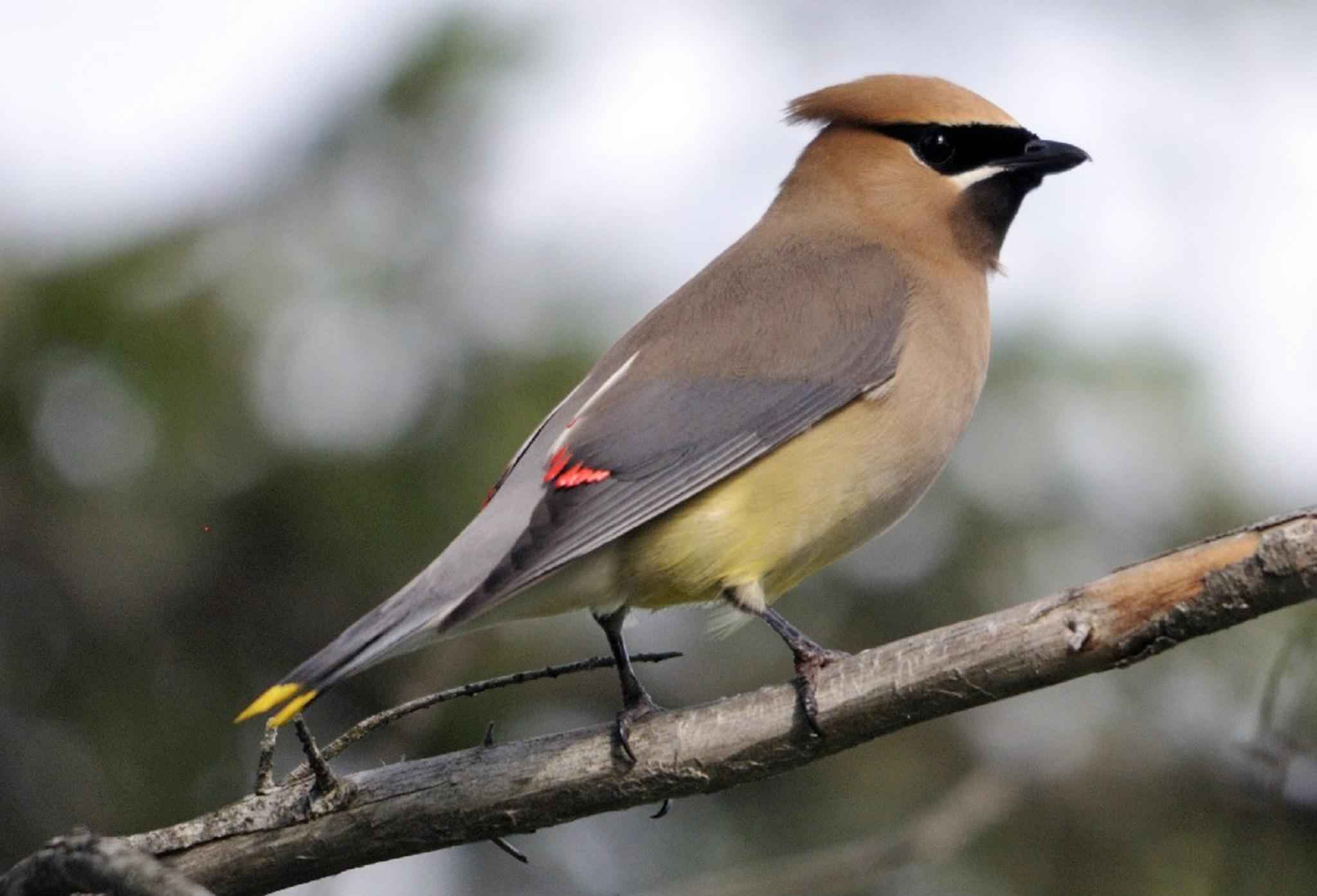
This is the time of year when you’ll see those sleek, silky-plumaged birds with small red tips on their wing feathers and a yellow edge on their tail swarming over your Pyracantha and other berry bushes. These birds are a mixture of brown, yellow, and gray and are distinguished by a topknot and a black face mask. The last half of their name comes from the waxy-appearing tips of their flight feathers, as if they were dipped in sealing wax. (Sealing wax was used from about the 16th century to seal envelopes and documents and often was imbedded with a royal or family crest.) Older birds have more waxy times than younger birds; this may have something to do with signaling maturity and perhaps attractiveness to potential mates. The first half of their name comes from that fact that they eat cedar (or juniper) berries in the winter. Or because they are cedar-colored. Take your pick.
The Cedar Waxwing breeds in the northern U.S. and well into Canada. In the winter they move southward, but are not long distance migrants. Their winter range extends into Mexico and Central America; northern California is the northern reach of their wintering grounds on the Pacific Coast. You will see them in flocks, often of dozens or scores of birds, moving from bush to bush, seeking berries. Unlike most songbirds, they do not sing. Their voice is a high, thin short whistle and coming from a flock of birds, is unmistakeable.
Waxwings eat fruits almost exclusively year round. Their digestive system is especially adapted to rapidly digest berries. They can ingest, process, and defecate the wastes of a berry in 16 minutes! In spring and summer, they add insects to their diet for protein. They eat a lot of berries in short order in the winter and it’s been said that they actually get drunk on fermented berries. I have yet to observe that, but apparently there is a high mortality rate among the inebriated birds who fall to their deaths or run into some obstruction. They will gorge themselves on berries and even get so full that a fulfilled bird will pass his berry to the adjacent bird to eat.
Like a lot of birds, some of their color comes from their food. Normally the tip of the tail is yellow. But since the introduction of an exotic honeysuckle in the northeastern U.S. with an orange berry, birds with orange tipped tails are often sighted.
The “wax” at the end of the secondary feathers are actually flattened feather extensions. Why they are there, ornithologists don’t really know. It might be that the red tips serve as indicators of age as older individuals tend to have more red tips than younger birds. During courtship, males and females “side-hop” along a branch or wire, apparently checking out the other birds’ red tips. This may assure that individuals of equal age mate. But that’s still speculation as well. The Bohemian Waxwing (“Bohemian” because of its wandering,) breeds farther north and rarely ventures in any numbers into California during the winter. The only other species of this group is the Japanese Waxwing of Asia; it has no “wax wings” but a red stripe in that area.
In 1908 the Vermont Assembly passed a bill to allow farmers to shoot waxwings as they were considered crop pests. Opponents of the bill brought birds to the senate chamber and the bill was defeated as the birds were considered too pretty to kill.